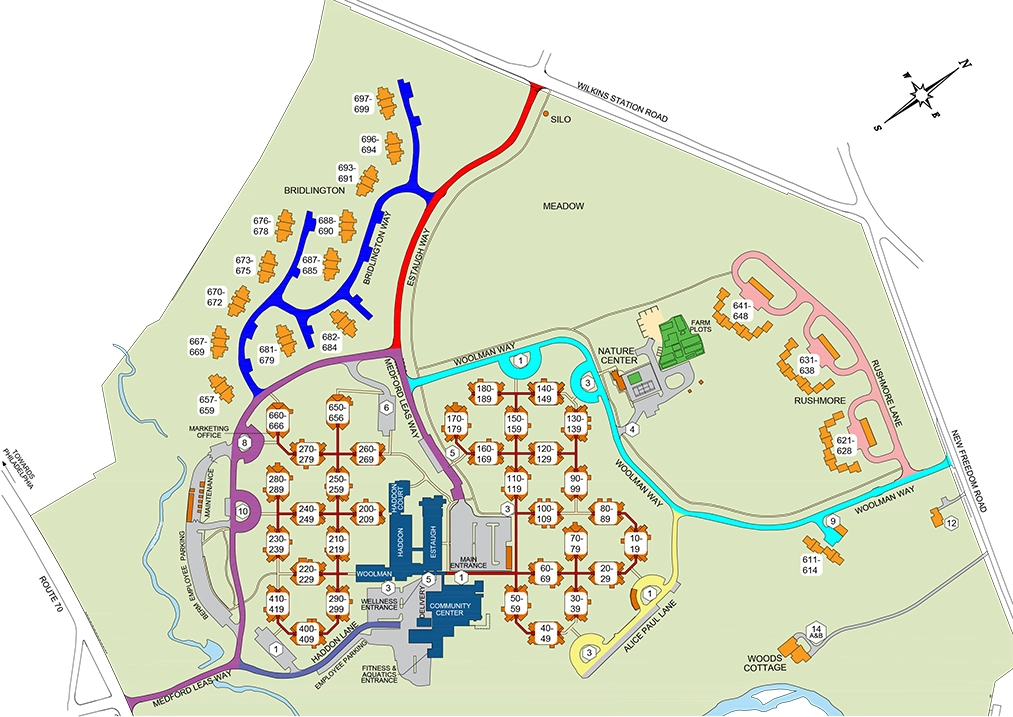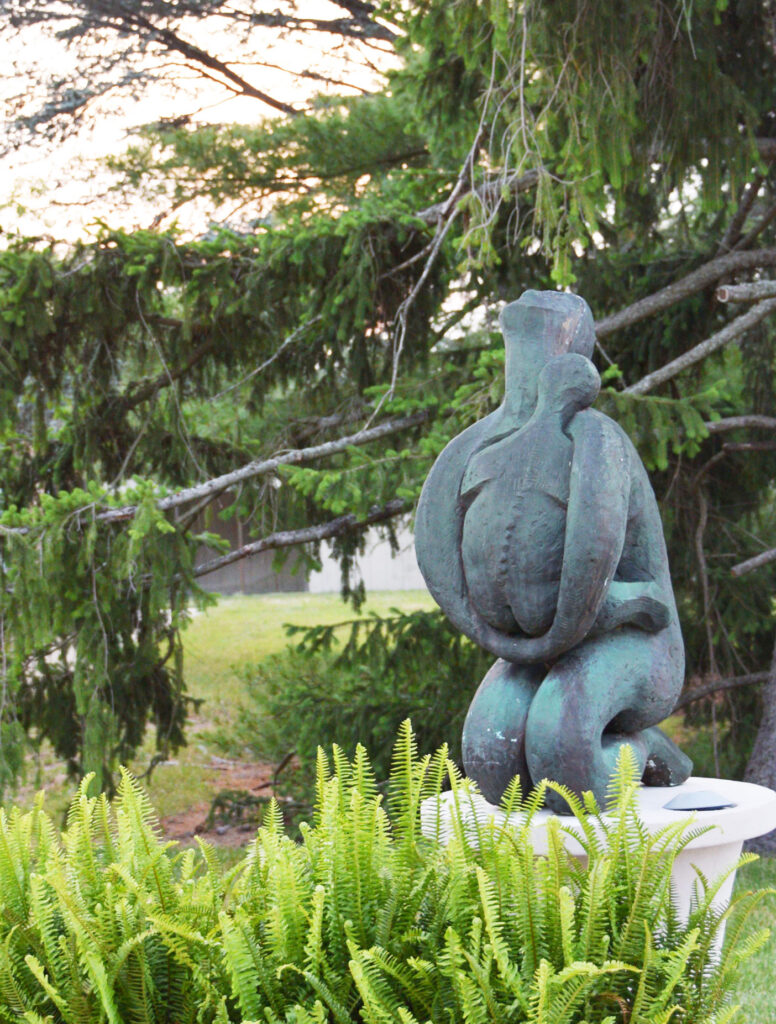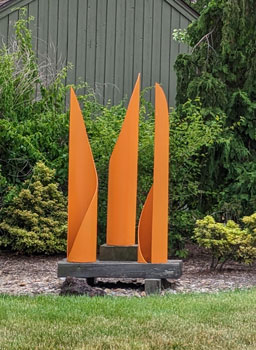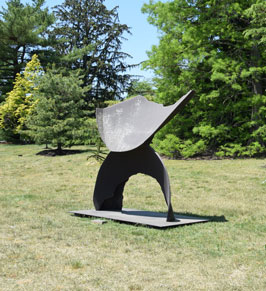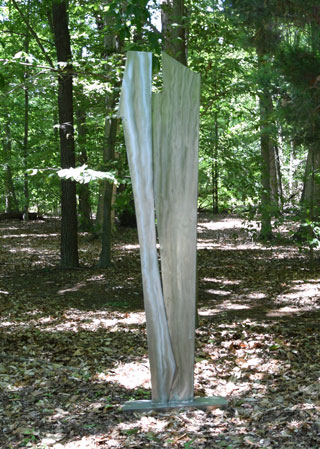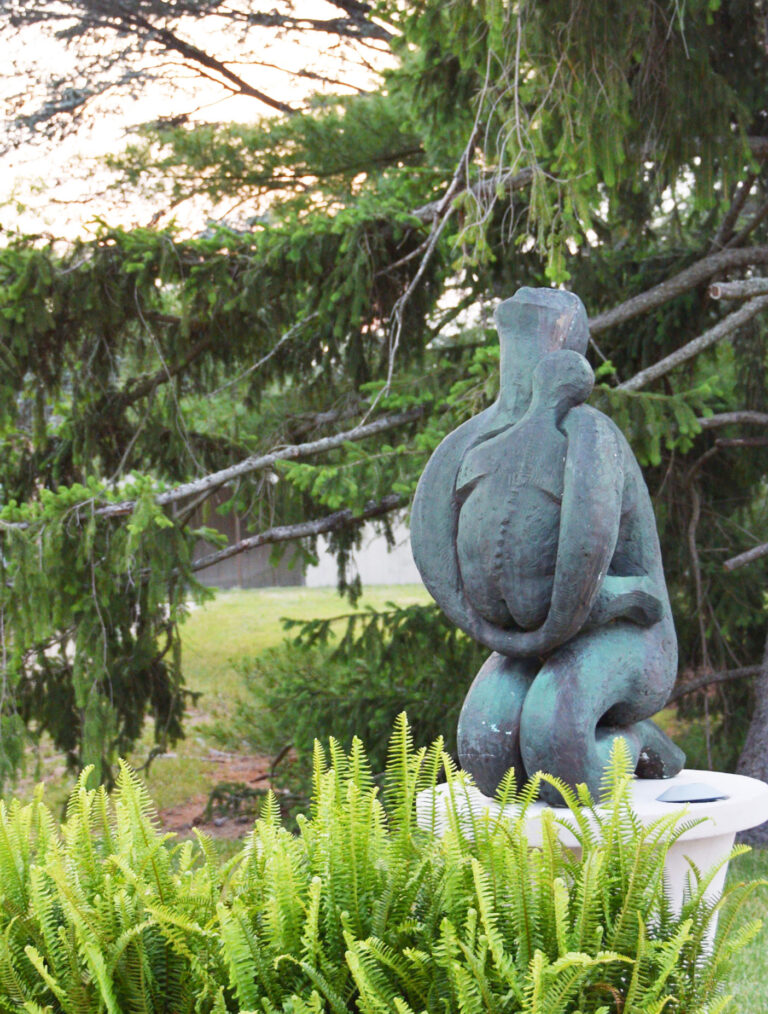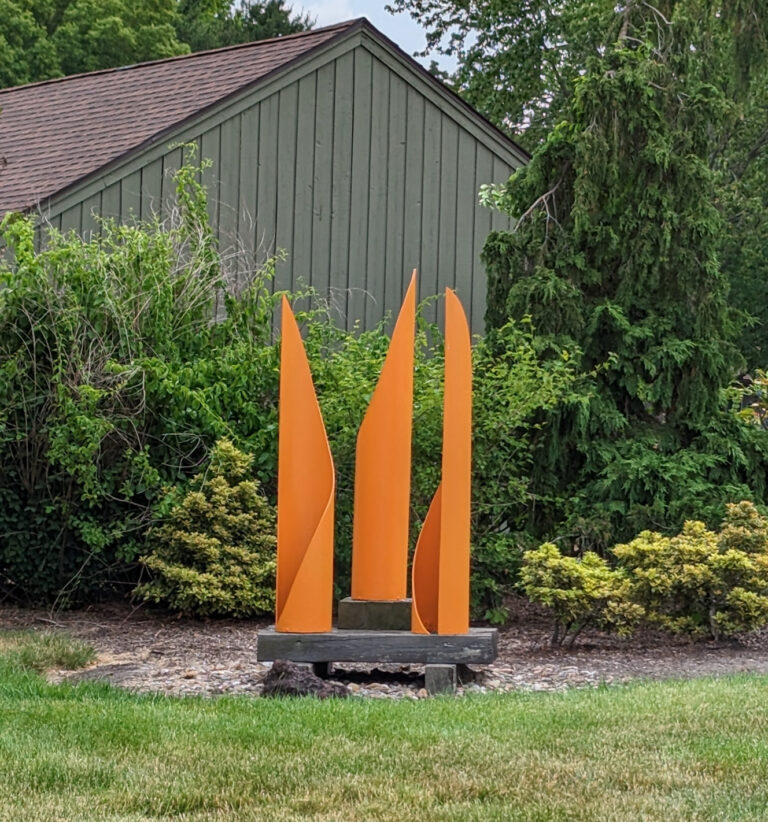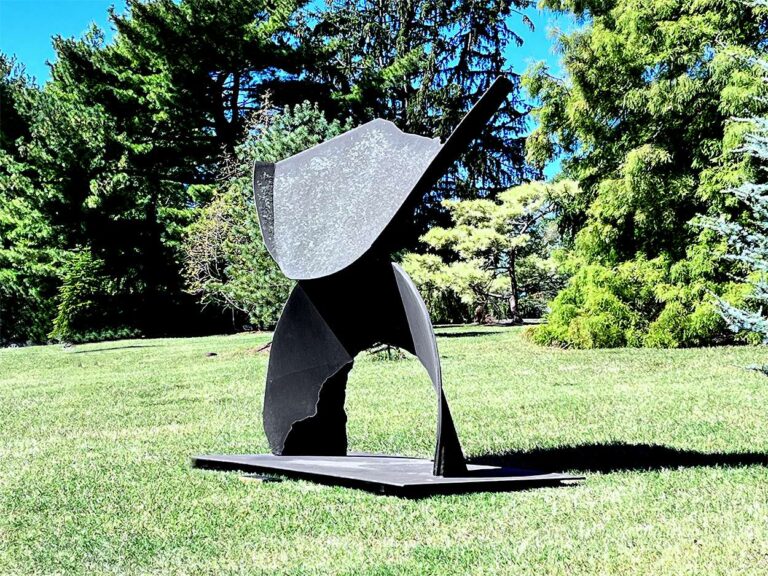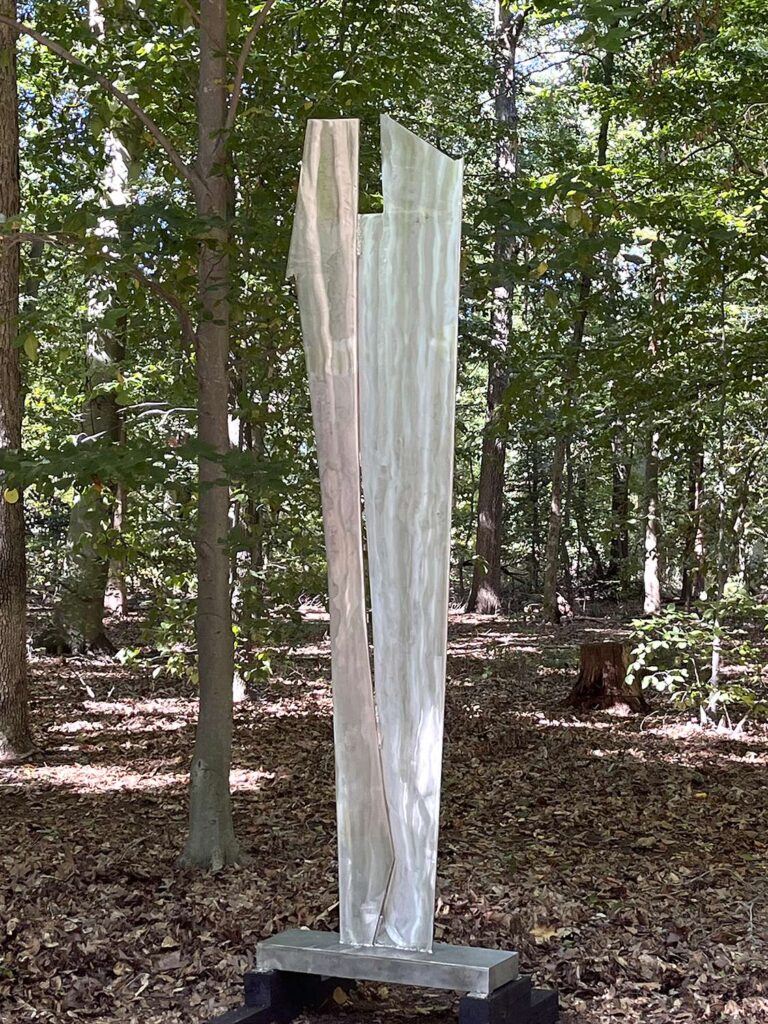The Barton Arboretum and Nature Preserve at Medford Leas, with its array of public gardens and natural areas, is proud host to a number of outdoor sculptures. The collection, begun with a donation in 1983, is sited around the Medford Campus in both formal and naturalistic settings.
The map below indicates the location of each sculpture. You can mouse-over a red number to pop-up an image. Click on the image to jump to the description and larger image further down the page. Better yet, visit the Medford Leas campus and experience them in person.
1. Mother and Child
Mother and Child, by Marjorie Michael of Katonah, NY, is fashioned of stone surfaced with a thin layer that has acquired a green patina. It was presented to Medford Leas in 1983 by the anonymous donors of the unrestricted Arboretum Fund administered by the Arboretum Oversight Committee
Michael, a sculptor-photographer, says, “To me this piece is a celebration of life. The mother embraces her child yet looks up to the creator of all life.”
Trained at Corcoran School of Art in Washington, D.C., she is also an award-winning photographer and author of a book, A Woman’s Journey, published by Alfred Knopf in 1976.
You can read more about Mother and Child here: https://mlra.org/the-sculpture-on-the-willow-room-terrace/.
2. The Three Graces
Paul Zelazny was a Medford Leas resident for 12 years, from 1989 until his death in 2001 at the age of 90. When Paul and his wife Anna came to Medford Leas, they brought with them a metal sculpture, The Three Graces. After it was painted by his friend Bart, it was installed in Rushmore near Court 62. Paul chose orange for his Graces.
Zelazny was born in the village of Torun, Poland. His father was a teacher. After he finished Gymnasium (high school), Paul determined to see the world and joined the Polish Navy. He was still in the Polish Navy when the Germans took over Poland, and what was left of the navy defected to England and continued the fight against fascism.
Following the war he chose not to return to Poland, which was then part of the Soviet Union. He shipped out with the Merchant Marine, sailing between the U.S. and Brazil. After meeting and marrying Anna, he joined a construction firm in Hackensack.
During those years Paul studied at both the New School and the Sculpture Center in Manhattan and began to work in various media such as stone, metal and marble and especially in wood.
You can read more about Paul Zelazny and his sculptures here: https://mlra.org/paul-zelazny-and-his-sculptures/.
Sculptor James Fuhrman
The following three sculptures were created by Jay Fuhrman; he donated them to Medford Leas in 2023. When asked how long it takes to create a sculpture, Fuhrman responded, “All my life. For me each piece is a meditation in material form.”
Fuhrman’s work seeks unity with the world around him. The sureness of the craftsmanship of the pieces and the serenity of the forms speak of his mature aesthetic sensibility and spirituality that has been tempered over time. The sculptures are meticulously layered and conceptually complex while retaining a visual clarity. (Dr. Therese Dolan, 60 Quests, catalog 2003).
At Medford Leas, the sculptures are carefully sited to become a part of the ‘natural’ wooded environment—leaf patterns dance across their surfaces as the works reflect the changing seasons and light—from winter to summer, sunrise to sunset. They have a strong connection to the deep geologic time of the earth and to the natural world. The sculptures, although large in human scale, create an intimacy with the viewers. They are a bridge and connection between the ‘natural’ and the human. The built objects and the natural environment ‘talk’ to one another: each enhancing the other.
Fuhrman holds degrees from the University Pennsylvania (BA) and Temple University (MEd) and studied Martha Graham Dance Technique from 1979-1982. He began his large scale public art work collaborating with Bernard Brenner. His Graham Technique calligraphic ink paintings became the primary visual source for his work. Visit his website: https://jfuhrman.com/wordpress/.
3. Akebono: Dance of the New Dawn
James Fuhrman. Painted Cor-Ten Steel, 2008.
The sculpture shows a strength and presence—tension and release—raised to three-dimensional form across the landscape. The two main elements come from Fuhrman’s calligraphic ink painting of Martha Graham dance forms: https://jfuhrman.com/wordpress/works-on-paper-2/ink-paintings-martha-graham-class-1980-1983/.
The title refers to the Hawaiian born sumo wrestling champion—massive, delicate, strength, and refinement.
4. Reflections of a Quiet Mind
James Fuhrman. Welded Cor-Ten Steel, 12 x 2 x 2’, 1978.
Collaboration with Bernard Brenner.
Fabricated from Cor-Ten (naturally oxidizing) steel, the sculpture has a varied natural texture that seems to reveal an interior depth—not unlike the trees and growth where it is sited. It is almost completely camouflaged in the wooded site. The individual sculptural forms have a quietness and stillness. No two pieces seem to be the same…many strokes make one complete piece.
5. Connection
James Fuhrman. Welded stainless steel, 8 x 3 x 2’, 2008.
Almost hidden, Connection stands in the beech trees with a quiet strength. Its hand-worked surface captures the sun light: changing from season to season, morning to afternoon and even as you move past it. The title refers to the intimacy and delicacy of the two joined elements; it underlines and draws the connections between you and the woods environment.

